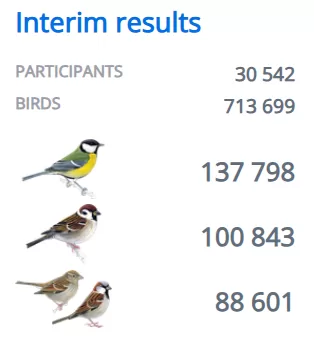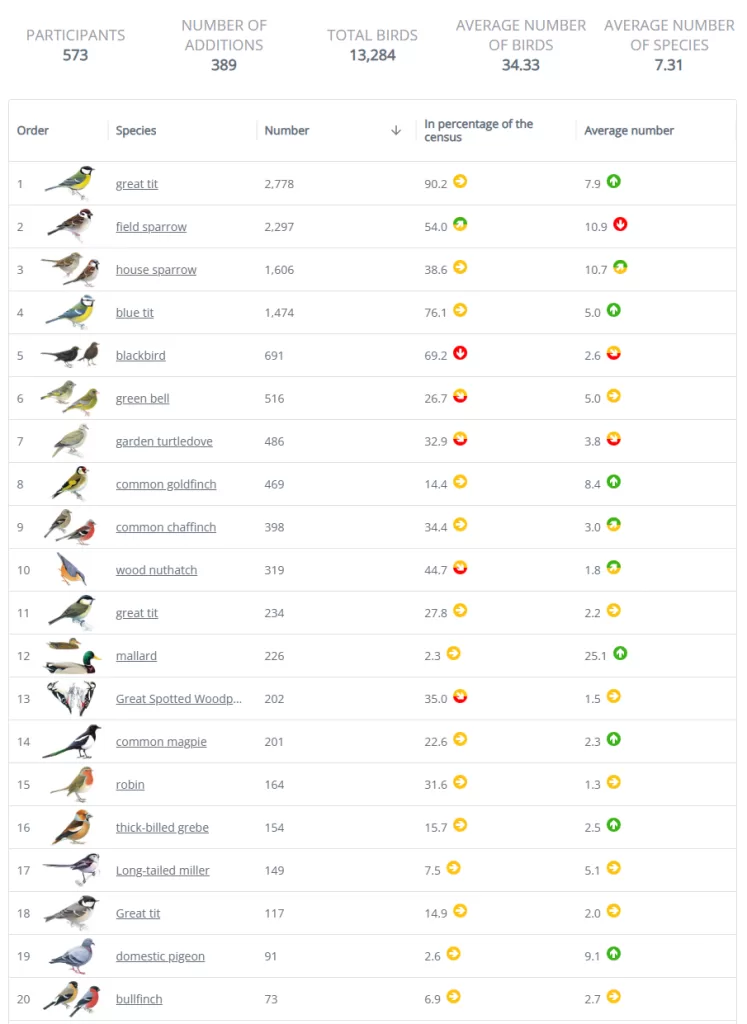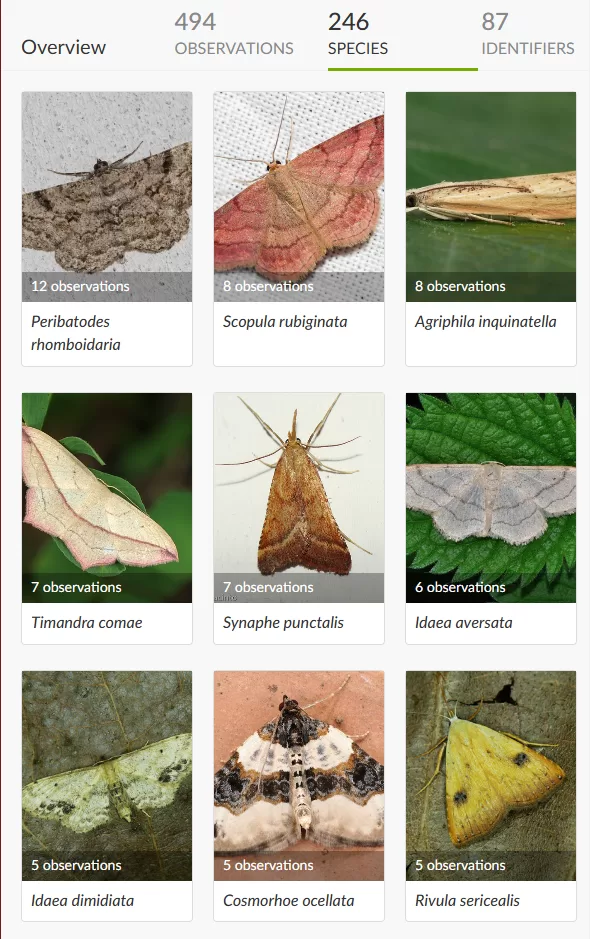The European Climate Service Copernicus has confirmed that last year was the warmest year on record.
On a walk around the village, I photographed the birds’ nests, now exposed in the leafless bushes. The GPS coordinates stored in the metadata of the photos point about a kilometer off, so it was a pretty pointless activity. But there are four new small pools on the lower creek I walked along, which made me happy.
No more butterflies flying around for a long time. It’s finally cold, meaning below zero. Predatory birds, especially buzzards and kestrels, are perched in the trees on the sides of the roads and trails. The sun is still warm. There’s little snow, but enough to draw birds from the surrounding area in.
I added a new, smaller bird feeder to the 30-year-old but still functional bird feeder. It has been a success; the bird wings are now constantly rustling in our yard.
The sunflower seed is clearly a winner.
Bird species on and around the feeder (old walnut tree, apple tree, shrubs):
Regular visitors:
Great tit (Parus major) (abundant)
Eurasian tree sparrow (Passer montanus) (abundant)
Eurasian blue tit (Cyanistes caeruleus)
Marsh tit (Poecile palustris)
Great spotted woodpecker (Dendrocopos major) (pair)
Irregular visitors;
European Robin (Erithacus rubecula) (pair)
Common blackbird (Turdus merula)
Eurasian chaffinch (Fringilla coelebs)
Eurasian collared dove (Streptopelia decaocto) (pair)
Eurasian jay (Garrulus glandarius)
European green woodpecker (Picus viridis)
This weekend was the 7th edition of the “Bird Hour”, an event of the Czech Ornithological Society (CSO), which invites the public to count birds at the bird feeders. It is an annual weekend of citizen science. Similar censuses take place in different countries, but what is relatively unique is the close cooperation of the CSO with colleagues from Bavaria, Austria, Switzerland, Slovakia and Serbia, which allows us to compare results across borders.
And the overall results so far?

The results from our county are 91% complete, and closely mimic the birds on my feeder:

All the data on the web of the Berd Hour project.
And what about the moths and other butterfies from previous year? I still have to process all the data, but The iNaturalist platform clearly summarizes the results of my butterfly observations over the last year:

171 species! Pretty mental, huh?
And the overview of the whole project? 264 species.
I never thought there would be so many for a single KFME grid cell!


Leave a Reply